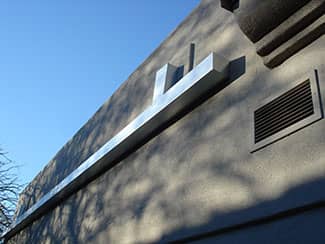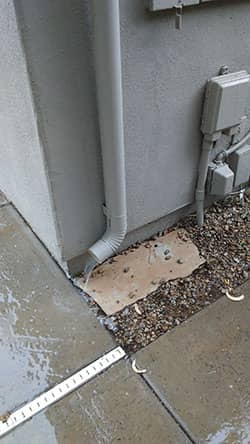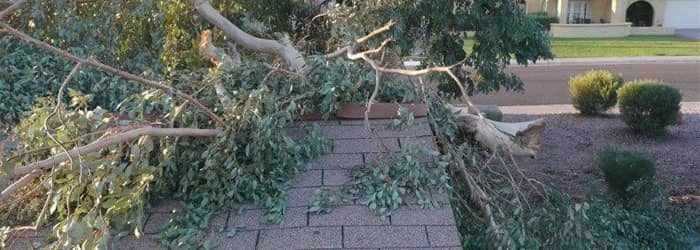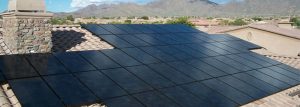The Arizona monsoon has finally arrived, and your plants and trees are probably happy about all the recent storms. But for many homeowners, the water and wind are creating costly problems.
Here are 10 important facts about storms, floods and leaks – everything from trees falling down to flooding in your kitchen to sewage backing up in the bathroom.

1 | Rain Gutters
Many homes in Arizona are built without gutters because we get so little rain. But you may need to install them to protect your home’s foundations. When rainwater isn’t properly drained away from your house, our bone-hard clay can be saturated repeatedly under your house. When the soil keeps getting saturated, it swells. This is a recipe for foundation failure.
Gutters can also stop flooding in your garage or on your patio. Remember, wood that constantly gets soaked by rainwater can rot and be vulnerable to termites.
2 | Drainage Problems
If you have regular water drainage problems on your patio or even your house, you may need to regrade your lot. But remember, you can’t divert the water onto the street or onto your neighbor’s lot.
You can add drains to driveways and patios and upgrade your concrete patio or driveway to permeable pavers, so water can soak through them. The “permeable” designation is one that most pavers can’t meet. You can also build “rivers” of rocks and add new plants to help the situation.

3 | Existing Leaks
If your dishwasher, washing machine, water heater or some plumbing malfunction causes flooding in your house, your home insurance will probably pay for the damage. But if you don’t maintain your plumbing properly, the insurance company may not pay up for normal wear and tear. If you have an old leak in your pipes that you ignored for years, you could be in trouble.
4 | Roof Damage
When a storm with rain, wind or hail damages your roof, your insurance company will probably pay. But don’t wait for the insurance adjuster to visit and make a decision. Cover the roof with plastic temporarily and mop up water in the house. If you see the drywall sagging on your ceilings, take several buckets and poke holes in the ceiling to get the water out into the buckets.
5 | Flood Insurance
But if a monsoon or some other storm floods your area and causes water or mud damage inside your home, you won’t be covered when you don’t have special insurance coverage. You can buy this coverage from the National Flood Insurance Program via your insurance agent. You might have been told all about this when you bought your house. If you are in a flood-prone area, you can’t get a home loan without buying this insurance.
6 | Tree Damage
If a storm blows down a tree that hits your house, your insurance company will generally cover the damage, provided the tree seemed to be healthy. But the company may not pay if no building, fence or similar structure was damaged.
7 | Fallen Tree Removal
When a tree falls in a storm, insurance also will not pay for removing the tree if it doesn’t do structural damage. Insurance will also not pay to replant gardens, bushes, flowers or other trees that are disturbed or damaged.

8 | Backed-Up Sewage
If you have a sewage backup into your home from your pipes, it is usually not covered without a special rider that can be added to most homeowner’s policies, according to Clayton Janson of Phocus Insurance Services in Phoenix. This is also true when tree roots invade your plumbing. You can buy insurance to help cover this situation.
9 | Preventive Maintenance
Preventive maintenance can help stop water damage accidents. Replace plastic supply lines on toilets and sinks with stainless steel braided lines with all brass fittings. Inspect hoses on washing machines, water heaters, dishwashers and icemakers and replace them regularly.
10 | Leak Detectors
If you’re really worried about leaks, you can now buy electronic water sensors or leak alarms. They can send a warning to your smart phone when they detect water. Detectors generally include a hub of some kind plus five or six little sensors you can place in various vulnerable areas – like under a refrigerator, toilet or water heater. Of course, someone must rush out to the house to fix the problem if you’re not around to do so.
###
Photo Credits:














